European Accessibility Act 2025: Compliant video and webinars [GUIDE]
Ensure your video content meets the European Accessibility Act 2025 standards - going live June 28, 2025. Learn how to make webinars and on-demand videos accessible and compliant.
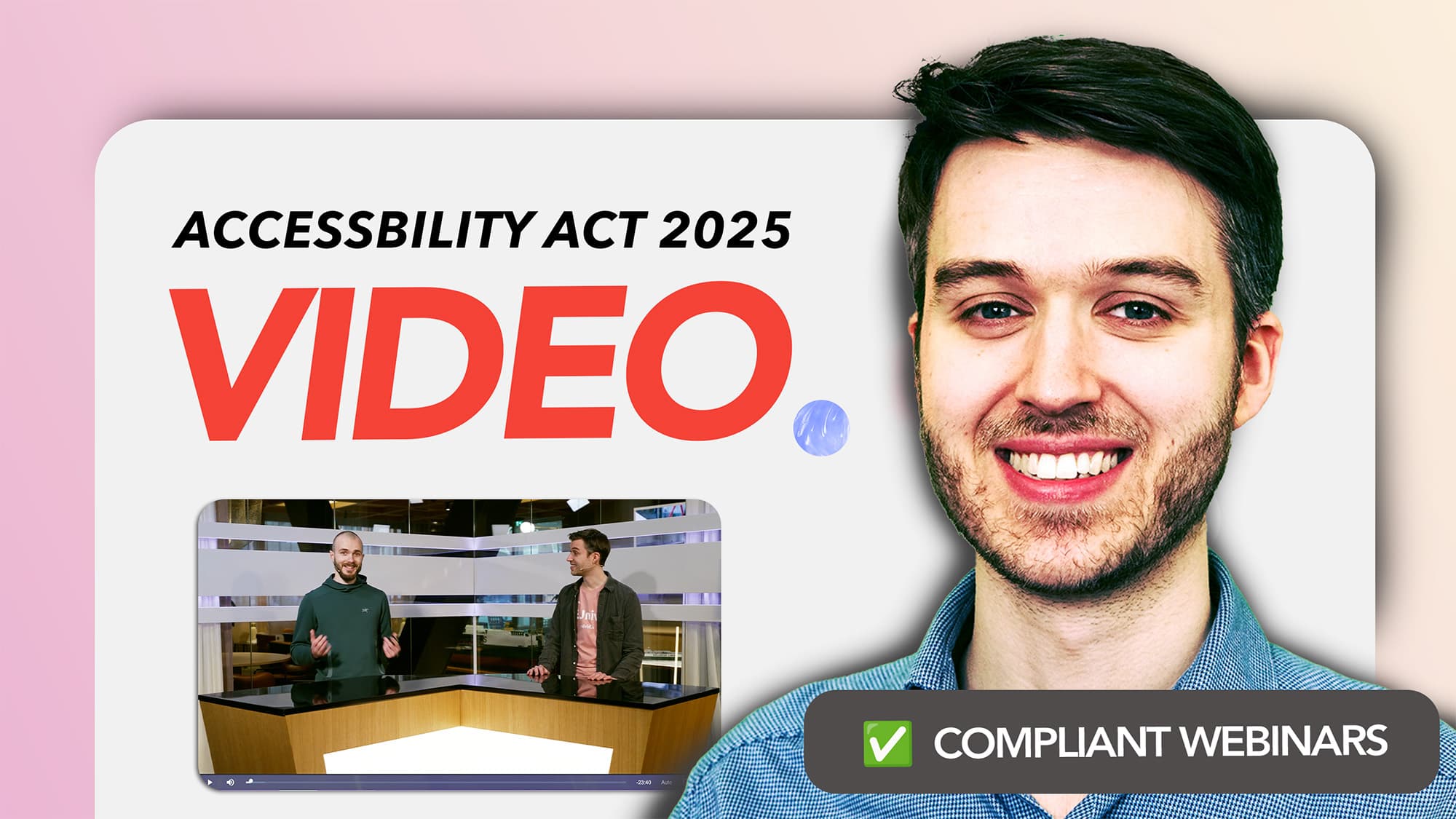
Contents
European Accessibility Act 2025: The basics
Starting June 28, 2025, the European Accessibility Act (EAA) will come into effect.
This act mandates that digital services should be accessible to all users, including individuals with disabilities. Thus, also your video content need to be accessible for all users - such as webinars, live streaming, and on-demand video.
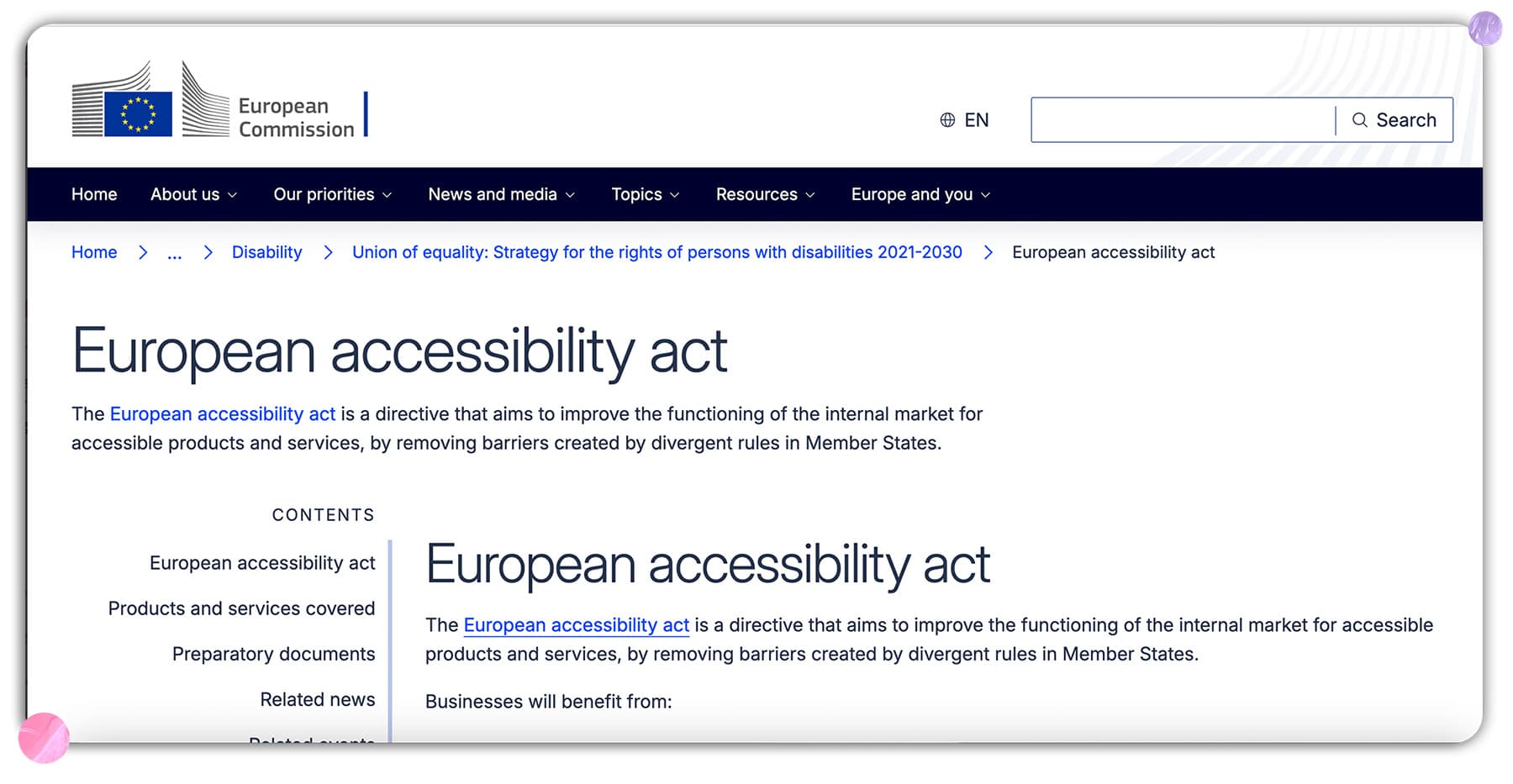
European Accessibility Act 2025
This directive aims to enhance digital inclusivity across the European Union (EU), impacting both public and private sectors.
For businesses and organizations that produce or distribute video content such as webinars, it's essential to understand and implement these new requirements to remain compliant and inclusive.
Let's look into what is the scope, who is affected, and what it means if you are running live video, webinars or video content.
Understanding the Scope of the EAA
The European Accessibility Act (EAA) requires that digital content and services align with the following 4 main principles:
1. Perceivable
Information must be presented in ways that users can perceive.
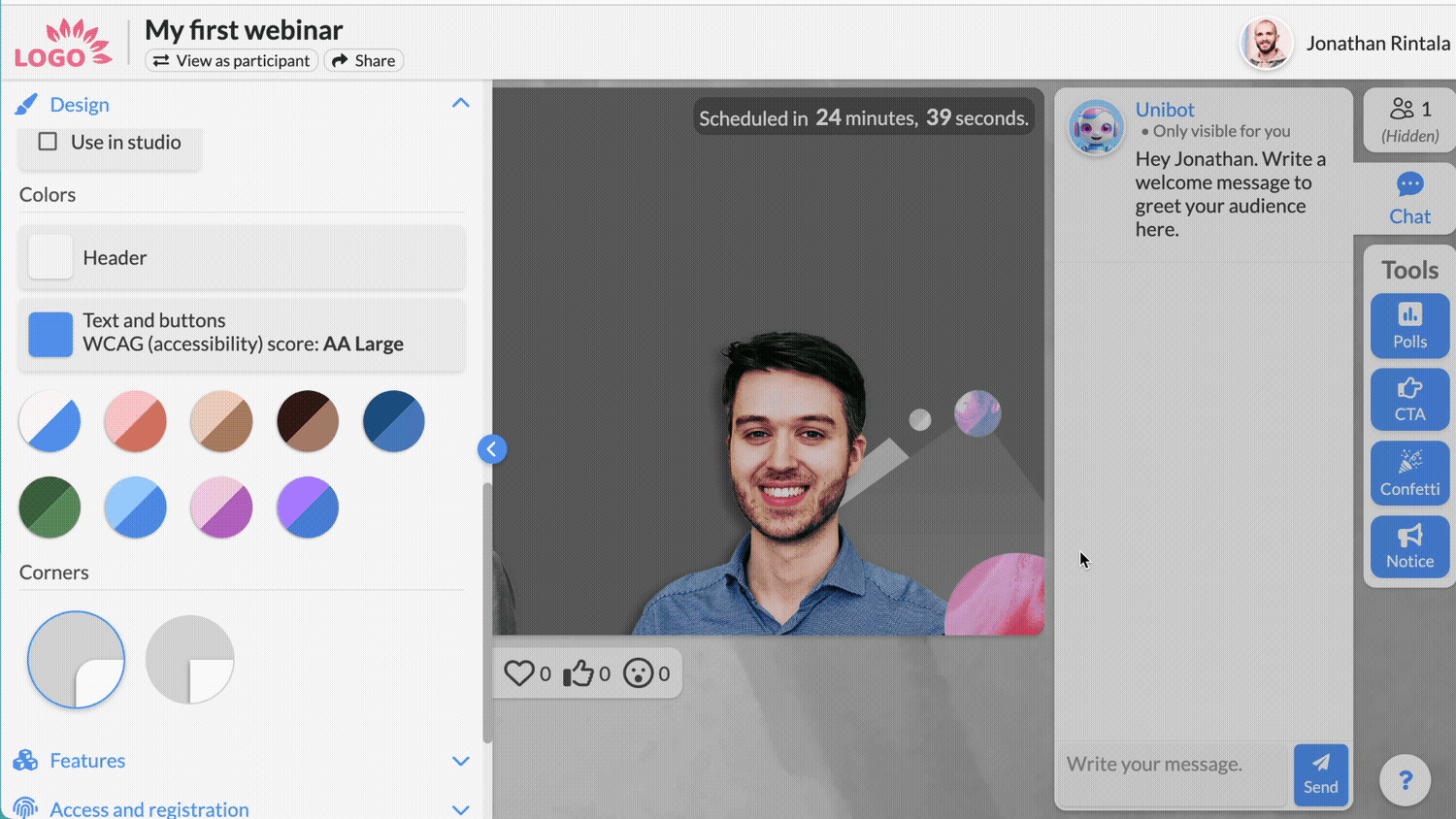
Example in action: Choosing WCAG compliant webinar colors in Univid
Example: (1) Use high contrasting colors in user interface for attendees with visual impairments. (2) Provide attendees with captions for on-demand videos.
2. Operable
Users should be able to navigate and interact with content using various methods, including keyboard navigation.
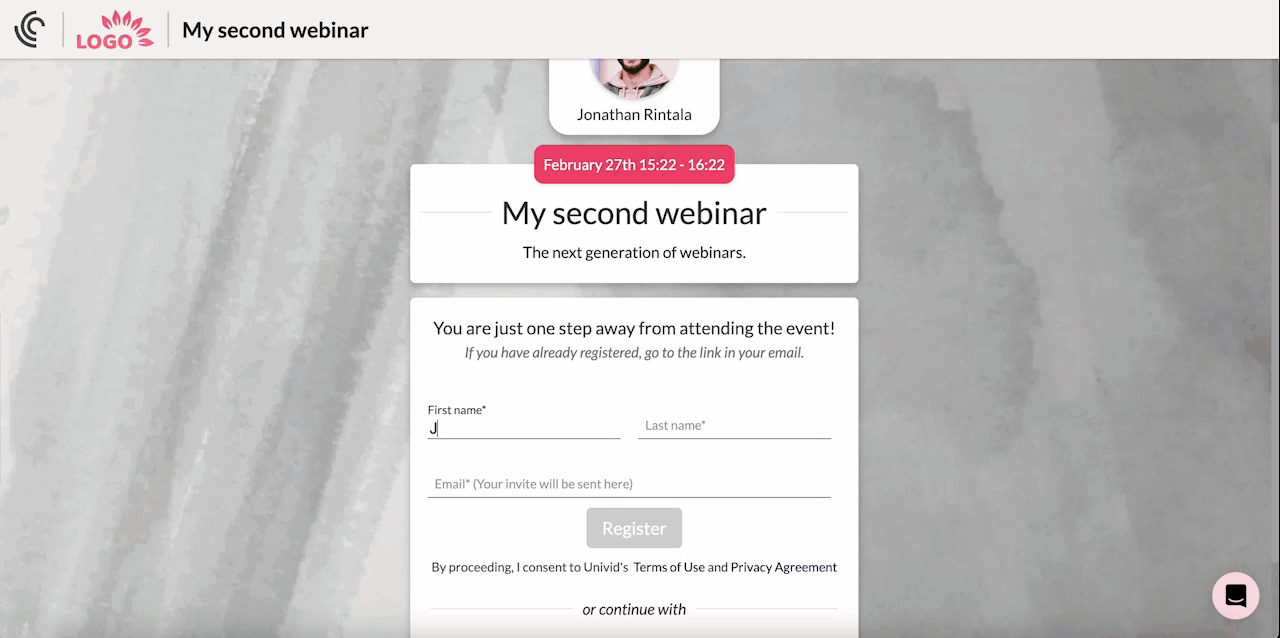
Example: (1) A webinar attendee should be able to enter the webinar using only their keyboard - for example tabbing and pressing "ENTER". (2) A host should be able to navigate the PDF slides using their keyboard arrows.
3. Understandable
Information and operation of the user interface must be clear and straightforward.
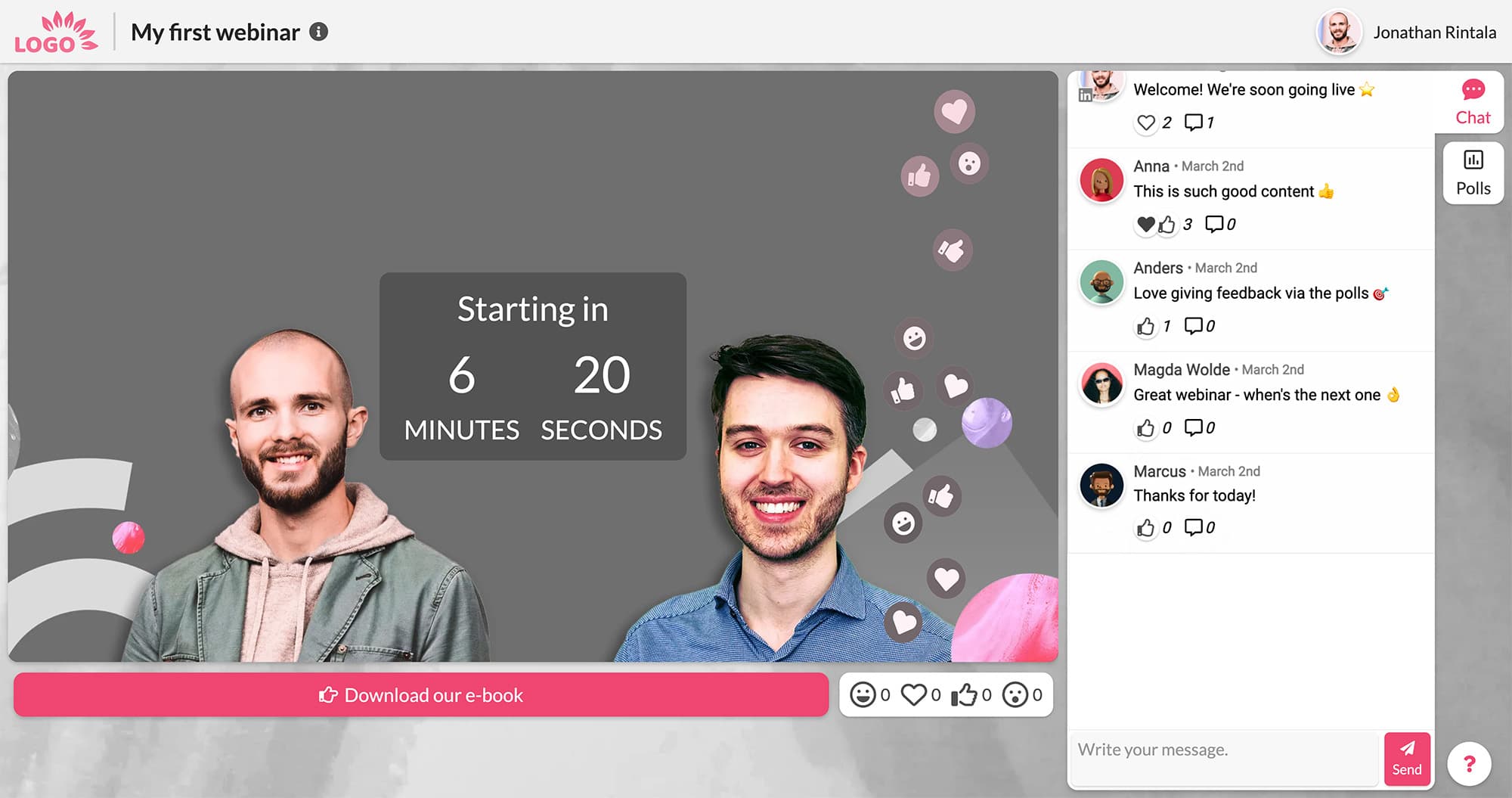
Example of a clear and simple UI with countdown before the webinar - setting attendee expectations and allowing all users to access easily.
And subtitles on recorded on-demand webinars.
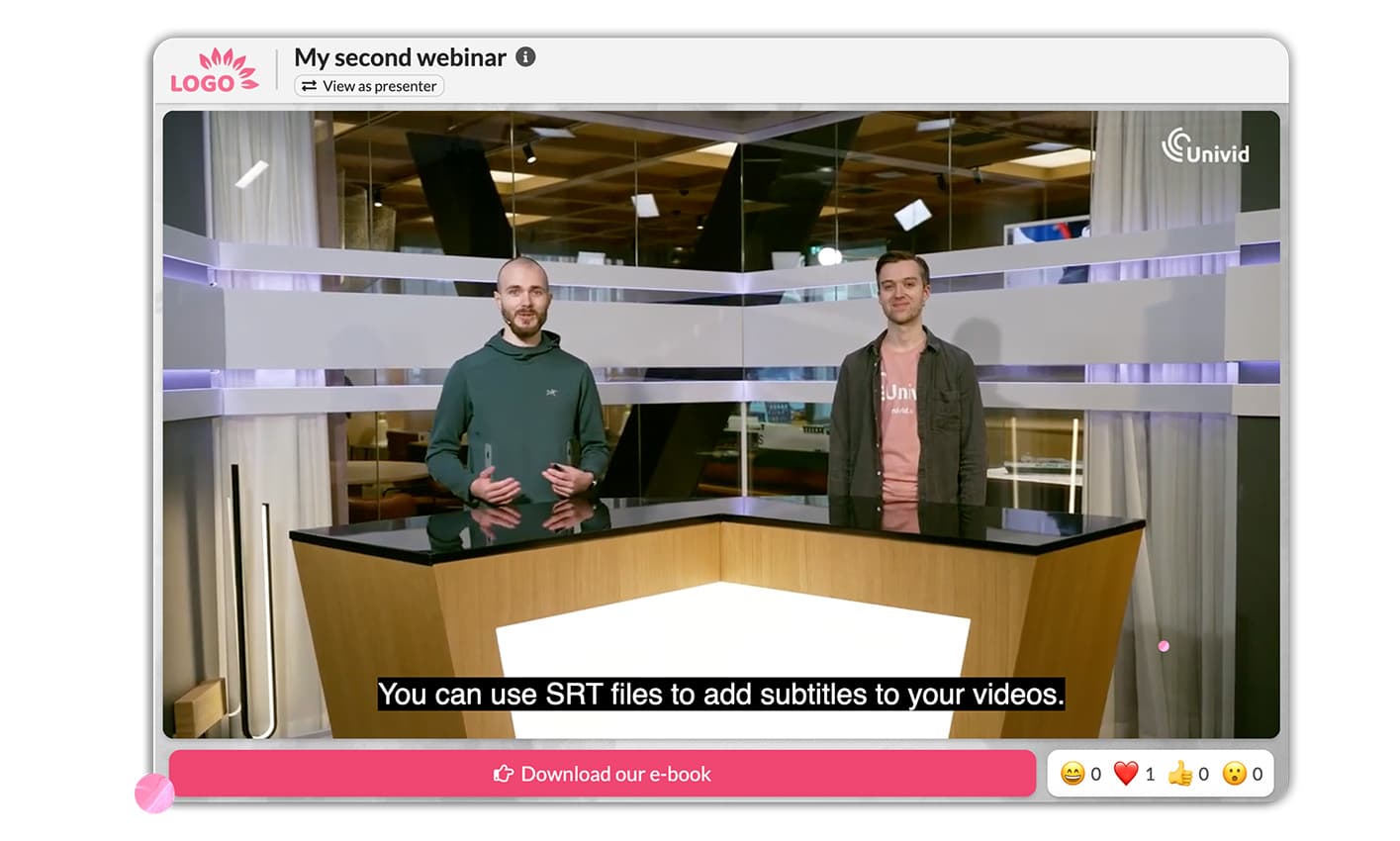
Example: No unnecessary text, or cluttered user interface. Clean, consistent, and easy to understand user experience is a must.
4. Robust
Content must be compatible with current and future assistive technologies.
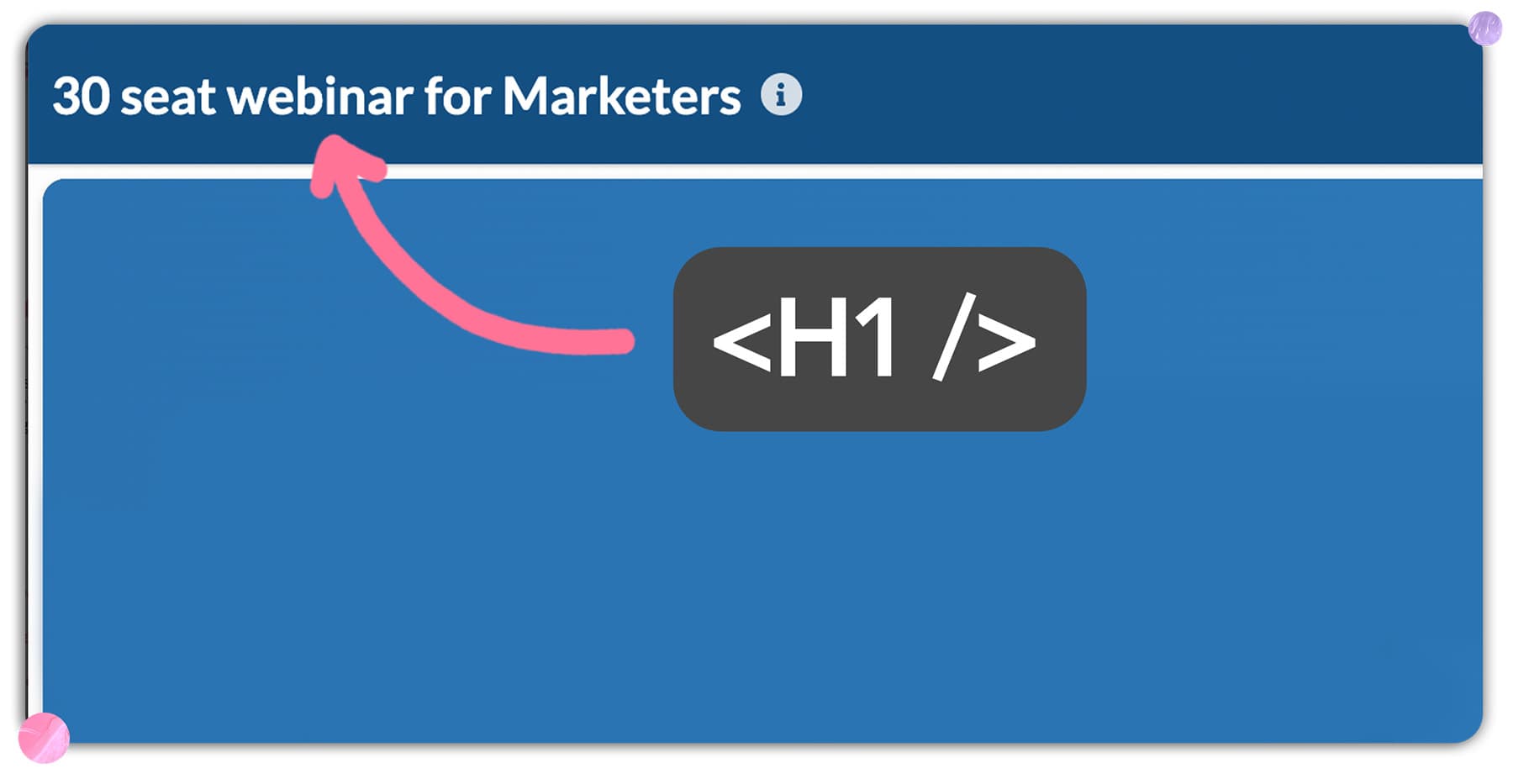
Example in action of clear webinar title correctly HTML tagged as H1 to allow navigation through screen readers
Example: (1) The webinar software has proper HTML tags for headings, and other elements - compatible with screen readers. (2) Webinars software is continuously tested to meet accessibility standards.
These principles aligns with the standard for compliance - the Web Content Accessibility Guidelines (WCAG) 2.1 Level AA.
Get started todayJoin over 70,000 users and create unique webinars with Univid.Get a demo
3 key requirements for video content
For organizations running webinars and video content, the following 3 requirements are key:
Subtitles and transcripts: All video content should ideally include subtitles and/or transcripts to accommodate users with hearing impairments. At least on-demand material.

Accessible platforms: Webinar and video platforms used should support assistive technologies and allow for keyboard navigation.
Clear communication: Information about the accessibility of content should be easily available. And easy to understand.
Timeline to get compliant - 2 important dates
For existing video material that you published before June 28, 2030 - it is enough that you meet the requirements of the EAA by June 28, 2030. However, for new video content you published after June 2025, you need to ensure that it is accessible right away.
However, you might want to choose a compliant provider already to be ready and have a future proof solution you can rely on.
Thus, these are the two dates to keep track of:
June 28, 2025: All new content, videos and webinars must comply with the EAA.
June 28, 2030: Existing video material launched before the 2025 deadline must be updated to meet accessibility standards.
Achieve compliance in 4 steps [CHECKLIST]
1. Run an accessibility audit
Evaluate current video content and platforms against WCAG 2.1 AA standards.
You can do a basic assessment yourself with your team, but it's always recommended to consult a legal expert if you are unsure. As WCAG says:
These evaluations should be performed by accessibility experts and include functional testing by native users of assistive technologies.
2. Fix identified accessibility issues
Add subtitles, transcripts, and ensure platform compatibility with assistive technologies.
Choose a compliant webinar software if you are unsure your current one meets the needs.
3. Train your video team
Educate staff on accessibility requirements and best practices on how you make sure your video content is up to par.
Attend webinars about the topic, talk to other peers in the industry running video content.
Often times webinar platforms within the EU, has competent staff has assisted in alot of similar cases and can help you out with the basics too.
4. Monitor compliance and gather feedback
Test your products and services regularly for compliance on a schedule.
Automate testing and set up feedback mechanisms to collect input from users and take quick action if you are notified of accessibility issues.
The added bonuses of compliance
Complying with the EAA not only ensures legal compliance but it also gives you some additional benefits for your video content. For example it:
Expands content reach: Accessible video content can be used by a broader audience, including people with disabilities.
Improves user experience: Improved accessibility often leads to better overall user satisfaction - as the UI is easy to navigate and understand.
Strengthens brand: Showing you commit to inclusivity through WCAG and EEA can enhance your organization's image - as you show you care about the audience of your content.
What happens if you don't comply with EEA?
While the EAA sets a common framework for compliance across the EU, individual Member States are responsible for transposing this framework into their national laws.
Some examples of different enforcement mechanisms on national level from WCAG.com:
Spain - allows for substantial penalties for EAA violations.
Ireland - EAA non-compliance may be punishable with jail time.
Do I need to have live transcriptions for my webinars and events?
While the EAA mandates accessibility features for audiovisual content - it does not explicitly state that real-time (live) captions are required during live webinars or broadcasts.
To ensure compliance and inclusivity, it's recommended to provide real-time captions during live events when possible.
At a minimum, making recordings of live events available with accurate captions and transcripts promptly after the event can help meet accessibility requirements.
Example: add transcriptions when uploading the on-demand webinar recording.
Choose a compliant webinar platform
If you are looking for a compliant platform, Univid is a great choice. Based in EU with HQ in Stockholm, Sweden - Univid is a GDPR compliant and easy-to-use webinar platform.
Watch Jonathan show you some of what you should look out for below:
Or try for free below!
Get started todayJoin over 70,000 users and create unique webinars with Univid.Show me a demo